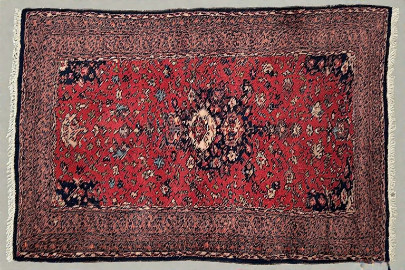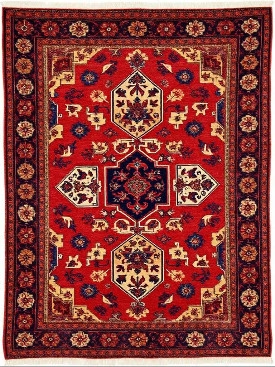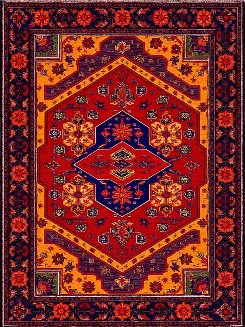Sorting Through Afghan Rugs' Legacy: Characteristics, Creativity, and Culture
Afghan carpets are living examples of history, culture, and perseverance from the parched bazaars of Herat to the remote mountains of Faryab. They are more than merely covers. Every knot, dye, and design exposes a people, a location, and a historical story. Whether sewn in a mountain village or a desert outpost, Afghan rugs offer a rich historical tapestry waiting to be explored.

What kinds of Afghan rugs are there?
Originally created by tribal and village weavers all across Afghanistan, Afghan rugs are handcrafted textiles. Typically produced of handspun wool dyed with natural dyes, they are knotted entirely by hand using techniques passed down across centuries.
Unlike factory-made carpets, Afghan rugs are notable for their faults, each one evidence of the maker’s spirit and hand. Frequently made during significant life events like weddings, migrations, or seasons of war and peace, rugs are cultural carriers instead just domestic ones.
A vibrant weaving legacy
One of Afghan society’s cornerstones has been rug creation for many of years. Usually social, the event finds children and women tying sidebyside on ground looms, designs memorized rather than scanned from schematics. Often closely related to tribal heritage, local identity, or even spiritual beliefs are these forms: geometric, floral, symbolic.
Afghan carpets have remained remarkably stable in a country characterized by ongoing change, whether empires, incursions, commerce, or other things. They both show continuity and flexibility.
Distinguishing Afghan rugs
1. Bold colors with roots in the ground:
Afghan weavers are masters of natural dyeing. Employing madder root, walnut husk, pomegranate rind, and indigo, they produce rich reds, vivid ochres, intense blues, and ebony blacks that age gracefully throughout years.
2. Personality wool:
Most Afghan carpets are crafted from Ghazni wool, valued for its long fibers and inherent gloss. It creates vivid colors because it is strong, soft, and absorbs dyes very well.
3. Symbols in Every Knot:
Typical motifs include stylized animals, trees of life, or even modern elements like tanks and helicopters in war carpets. Gul-tribal markings. Nothing is by chance; patterns are carefully picked to convey remembrance, identity, or defense.
4. Enduring Craftsmanship:
Usually doublewefted with symmetrical knots (Turkish or Ghiordes knot), Afghan rugs doubleweave usually, thereby increasing their density and longevity. Some might last for centuries with little wear.
Learn a couple Afghan Rug types

Bokhara Rugs
Bokhara rugs are typically woven by the Turkoman tribes and display a unique geometric woven design, and a specific earthy color scheme. Bokhara rugs are durable, high quality wool rugs that typically need special cleaning services to make sure the natural textures and designs are still fresh – and the rugs will maintain their original beauty.

Baluchi Rugs
Baluchi rugs are known for their culture and characteristic colors and geometric patterns. The tribal color palette of the Baluchi rugs reflects the traditional approach of the Baluchi people. These heavy dhurries made with wool may require special professional cleaning in order to maintain the characteristics of the designs and be able to use them many times.
Care Tips for Afghan Rugs
- Vacuum Carefully: Use suction only. Avoid rotating brushes to preserve the knots and wool fibers.
- Rotate Periodically: Helps maintain even wear and exposure to sunlight.
- Spot Clean Gently: Use a mild solution and dab with a white cloth. Always test on the rug’s edge first.
- Avoid Harsh Cleaners: Natural dyes are prone to bleeding. Use pH-neutral or wool-safe products only.
- Annual Professional Cleaning: Afghan rugs benefit from expert cleaning every 12–18 months to remove embedded dust and refresh the fibers.
Protect Your Afghan Rug With Expert Cleaning
Preserve the legacy, beauty, and craftsmanship woven into your Afghan rug with Mo’s Rug & More. Our fiber-safe, hand-cleaning techniques honor traditional materials and methods, removing embedded dirt, restoring natural dyes, and extending the life of your rug without compromising its story.
